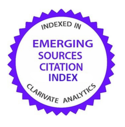Precio de las rentas vitalicias para personas con enfermedad: el caso de Portugal
DOI:
https://doi.org/10.26360/2022_1Palabras clave:
rentas vitalicias, vida deteriorada, supervivencia neta, supervivencia bruta, SHAREResumen
Los mercados de rentas vitalicias están subdesarrollados en Portugal y otros países. Este “annuitization puzle” se explica por las mejoras en la mortalidad en edades avanzadas y la selección adversa pasiva, razones que ponen en una desventaja injusta a las personas con una esperanza de vida disminuida. Usando datos del proyecto SHARE (Survey of Health, Aging and Retirement in Europe), evaluamos el impacto de algunas de las enfermedades más graves y comunes sobre una curva de supervivencia de referencia. Luego calculamos el precio de las rentas vitalicias por deterioro de la vida, utilizando la supervivencia ajustada, y las comparamos con las de la población de referencia. Mostramos que aplicar la mortalidad de referencia a las vidas deterioradas es muy injusto y que es posible fijar el precio de las rentas vitalicias para las vidas debilitadas por la enfermedad de manera precisa.
Descargas
Citas
Antolin P., Scheuenstuhl G. F., Blome S., Karim D., Payet S. and Yermo J. (2009). Investment regulations and defined contribution pensions (Working paper on insurance and private pensions, Nº 37). OECD.
Autoridade de Supervisão de Seguros e Fundos de Pensões, ASF (2019). Estatísticas de Fundos de Pensões 2018. http://www.asf.com.pt
Avraham R. (2017). Discrimination and Insurance. Law and Econ Research Paper No. E574, University of Texas.
Bajpai R., Chaturvedi H. and Pandey A. (2014). Relative Survival: A Useful Tool in Population Based Health Studies. American Journal of Mathematics and Statistics, 4(1), 38-45.
Benartzi S., Previtero A. and Thaler R. H. (2011). Annuitization Puzzles. The Journal of Economic Perspectives, 25(4), 143-164.
Berkson J. (1942). The Calculation of Survival Rates. In W Walters, HK Gray and TJ Priestley, (Eds.), Carcinoma and Other Malignant Lesions of the Stomach (pp. 467-484). WB Saunders.
Berkson J. and Gage R. P. (1950). Calculation of survival rates for cancer. Proceedings of the staff meetings. Mayo Clinic, 25(11).
Berkson J. and Gage R. P. (1952). Survival curve for cancer patients following treatment. Journal of the American Statistical Association, 47(259), 501-515.
Berry G. (1979). A note on Wong's competing risk model. International Journal of Epidemiology, 8(1), 79-80.
Blake D. and Burrows W. (2001). Survivor Bonds: Helping to Hedge Mortality Risk. Journal of Risk and Insurance, 68(2), 339-348.
Blake D., Burrows W. and Orszag J. M. (2002). Survivor Bonds and Compulsory Annuitization: Reducing the Costs of Pension Provision. In Z Bodie, B Hammond and OS Mitchell, (Eds.), Innovations in Retirement Financing. University of Pennsylvania Press.
Blake D., Cairns A. J. G. and Dowd K. (2006). Living with mortality: Longevity bonds and other mortality-linked securities. British Actuarial Journal, 12(1), 153-197.
Börsch-Supan A., Brandt M., Hunkler C., Kneip T., Korbmacher J., Malter F., Schaan B., Stuck S. and Zuber S. (2013). Data Resource Profile: The Survey of Health, Ageing and Retirement in Europe (SHARE). International Journal of Epidemiology, 42(4), 992-1001. https://www.doi.org/10.1093/ije/dyt088
Börsch-Supan A. and Gruber S. (2019). easySHARE (Release version: 7.0.0.) [Data set]. SHARE-ERIC. https://www.doi.org/10.6103/SHARE.easy.700
Brown J. R. and Poterba J. M. (2000). Joint Life Annuities and Annuity Demand by Married Couples. The Journal of Risk and Insurance, 67(4), 527-553.
Brown J. R. (2001). Private pensions, mortality risk, and the decision to annuitize. Journal of Public Economics, 82(1), 29-62.
Brown J. R. and Orszag P. (2006). The Political Economy of Government-Issued Longevity Bonds. Journal of Risk and Insurance, 73(4), 611-631.
Brown J. R. (2007). Rational and behavioral perspectives on the role of annuities in retirement planning (NBER WP 13537). National Bureau of Economic Research.
Brown J. R., Casey M. and Mitchell O. S. (2008). Who Values the Social Security Annuity?: New evidence on the annuity puzzle (NBER WP 13800). National Bureau of Economic Research.
Brown J. R., Kling J. R., Mullainathan S. and Wrobel M.V. (2008). Why don't people insure late life consumption: A framing explanation of the under-annuitization puzzle (NBER WP 13748). National Bureau of Economic Research.
Brown R. L. and Scahill P. L. (2010). Issues in the Issuance of Enhanced Annuities (Research Papers 265). SEDAP, McMaster University.
Chiang C. L. (1961). A stochastic study of the life table and its applications. III. The follow-up study with the consideration of competing risks. Biometrics, 17(1), 57-78.
Coleman M. P., Quaresma M., Berrino F., Lutz J. M., De Angelis R., Capocaccia R. and Micheli A. (2008). Cancer survival in five continents: a worldwide population-based study (CONCORD). The lancet oncology 9(8), 730-756.
Cornfield J. (1957). Estimation of the probability of developing a disease in the presence of competing risks. American Journal of Public Health and the Nation’s Health, 47(5), 601-607.
Cronin K. A. and Feuer E. J. (2000). Cumulative cause-specific mortality for cancer patients in the presence of other causes: a crude analogue of relative survival. Statistics in Medicine, 19(13), 1729-1740.
Cutler S. J., Criswold M. H. and Eisenberg H. (1957). An interpretation of survival rates: Cancer of the breast. Journal of the National Cancer Institute, 19(6), 1107-1117.
Cutler S. J. and Ederer F. (1958). Maximum utilization of the life table method in analyzing survival. Journal of chronic diseases, 8(6), 699-712.
Dickman P. W. and Coviello E. (2015). Estimating and modeling relative survival. Stata J, 15(1), 186-215.
Dushi I. and Webb A. (2004). Household annuitisation decisions: simulations and empirical analysis. Journal of Pension Economics and Finance 3(02), 109-143.
Ederer F. and Heise H. (1959). The effect of eliminating deaths from cancer on general population survival rates. National Cancer Institute Methodological Note 11 End Results Evaluation section.
Ederer F., Axtell L. M. and Cutler S. J. (1961). The relative survival rate: A statistical methodology. National Cancer Institute Monograph, 6, 101-121.
Erhardt C. L. (1958). What is the cause of death? Journal of the American Medical Association, 168(2), 161-168.
Finkelstein A. and Poterba J. (2002). Selection effects in the United Kingdom individual annuities market. The Economic Journal, 112(476), 28-50.
Friedberg L. and Webb A. (2007). Life is Cheap: Using Mortality Bonds to Hedge Aggregate Mortality Risk (NBER WP 11984). National Bureau of Economic Research.
Fong J. H. (2015). Beyond Age and Sex: Enhancing Annuity Pricing. Geneva Riusk and Insurance Review, 40(2), 133-170.
Gatzert N., Hoermann G. and Schmeiser H. (2012). Optimal Risk Classification with an Application to Substandard Annuities. North American Actuarial Journal, 16, 462-486.
Gatzert, N. and Klotzki, U. (2016). Enhanced Annuities: Drivers of and Barriers to Supply and Demand (2016). Geneva Papers on Risk and Insurance - Issues and Practice, 41, 53-77.
Global Health Observatory data (2019). World Health Organization. http://www.who.int/gho/en/
Gruber S., Hunkler C. and Stuck S. (2014). Generating easySHARE: guidelines, structure, content and programming (Working Paper Series 17-2014). Munich Center for the Economics of Aging (MEA) SHARE.
Hakulinen T. (1982). Cancer survival corrected for heterogeneity in patient withdrawal. Biometrics, 38, 933-942.
Howlader N., Ries L. A., Mariotto A. B., Reichman M. E., Ruhl J. and Cronin K. A. (2010). Improved estimates of cancer-specific survival rates from population-based data. Journal of the National Cancer Institute, 102(20), 1584-1598.
James E., Vittas D. and Song X. (2001). Annuities markets around the world: Money's worth and risk intermediation (Working Paper 16/01). CeRP.
Johnson R. W., Burman L. E. and Kobes D. (2004). Annuitized wealth at older ages: Evidence from the Health and Retirement Study. Final Report to the Employee Benefits Security Administration, US Department of Labor: The Urban Institute.
Milmore B. K. (1958). Influence of changes in general mortality rates, and of age, upon survival of patients with a chronic disease. Cancer, 11(6), 1255-1263.
Modigliani F. (1986). Life cycle, individual thrift, and the wealth of nations. The American Economic Review, 76(3), 297-313.
Nelson C. P., Lambert P. C., Squire I. B. and Jones D. R. (2008). Relative survival: What can cardiovascular disease learn from cancer? European Heart Journal, 29, 941-947.
Palmon O. and Spivak, A. (2007). Adverse selection and the market for annuities. GENEVA Risk and Insurance Review, 32, 37-59.
Parkin D. M. and Khlat M. (1996). Studies of cancer in migrants: rationale and methodology. European Journal of Cancer, 32(5), 761-771.
Percy C. and Dolman A. (1978). Comparison of the coding of death certificates related to cancer in seven countries. Public Health Reports, 93(4), 335-350.
Percy C. and Muir C. (1989). The international comparability of cancer mortality data results of an international death certificate study. American Journal of Epidemiology, 129(5), 934-946.
Pineda M. D, White E., Kristal A. R. and Taylor V. (2001). Asian breast cancer survival in the U.S.: a comparison between Asian immigrants, U.S.-born Asian Americans and Caucasians. International Journal of Epidemiology, 30(5), 976-982.
Perme M. P., Stare J. and Estève J. (2012). On estimation in relative survival. Biometrics, 68(1), 113-120.
Pokhrel A. (2007). Age-Standardization of Relative Survival Ratios. Academic dissertation University of Tampere Finnish Cancer Registry.
Prentice R. L., Kalbfleisch J. D., Peterson A.V., Flournoy N., Farewell V. T. and Breslow N.E. (1978). The analysis of failure times in the presence of competing risks. Biometrics, 34(4), 541-554.
Rego M. L. (2015). Statistics as a basis for discrimination in the insurance business. Law, Probability and Risk, 14(2), 119-134.
Spiegelman M., Bellows M. T., Erhardt C. L., Keehn R. J., Moriyama I. M., Parkhurst E. and Sellers A. H. (1958). Problems in the Medical Certification of Causes of Death: Committee on Medical Certification of Causes of Death-Statistics Section. American Journal of Public Health and the Nation’s Health, 48(1), 71-80.
Steinorth, P. (2012). The demand for enhanced annuities. Journal of Public Economics, 96, 973-980.
Wardzynska A., Kubsik B. and Kowalski M. L. (2015). Comorbidities in elderly patients with asthma: association with control of the disease and concomitant treatment. Geriatrics and Gerontology International, 15(7), 902-909.
Webb A. (2006). Is adverse selection in the annuity market a big problem. Issue Brief, 40. Center for Retirement Research at Boston College.
Wong O. (1977). A competing-risk model based on the life table procedure in epidemiological studies. International Journal of Epidemiology, 6(2), 153-159.
Yaari M. E. (1965). Uncertain lifetime, life insurance, and the theory of the consumer. The Review of Economic Studies, 32(2), 137-150.
Descargas
Publicado
Cómo citar
Número
Sección
Licencia
Derechos de autor 2023 Onofre Simões, Cláudia Barradas

Esta obra está bajo una licencia internacional Creative Commons Atribución-NoComercial-SinDerivadas 4.0.


















